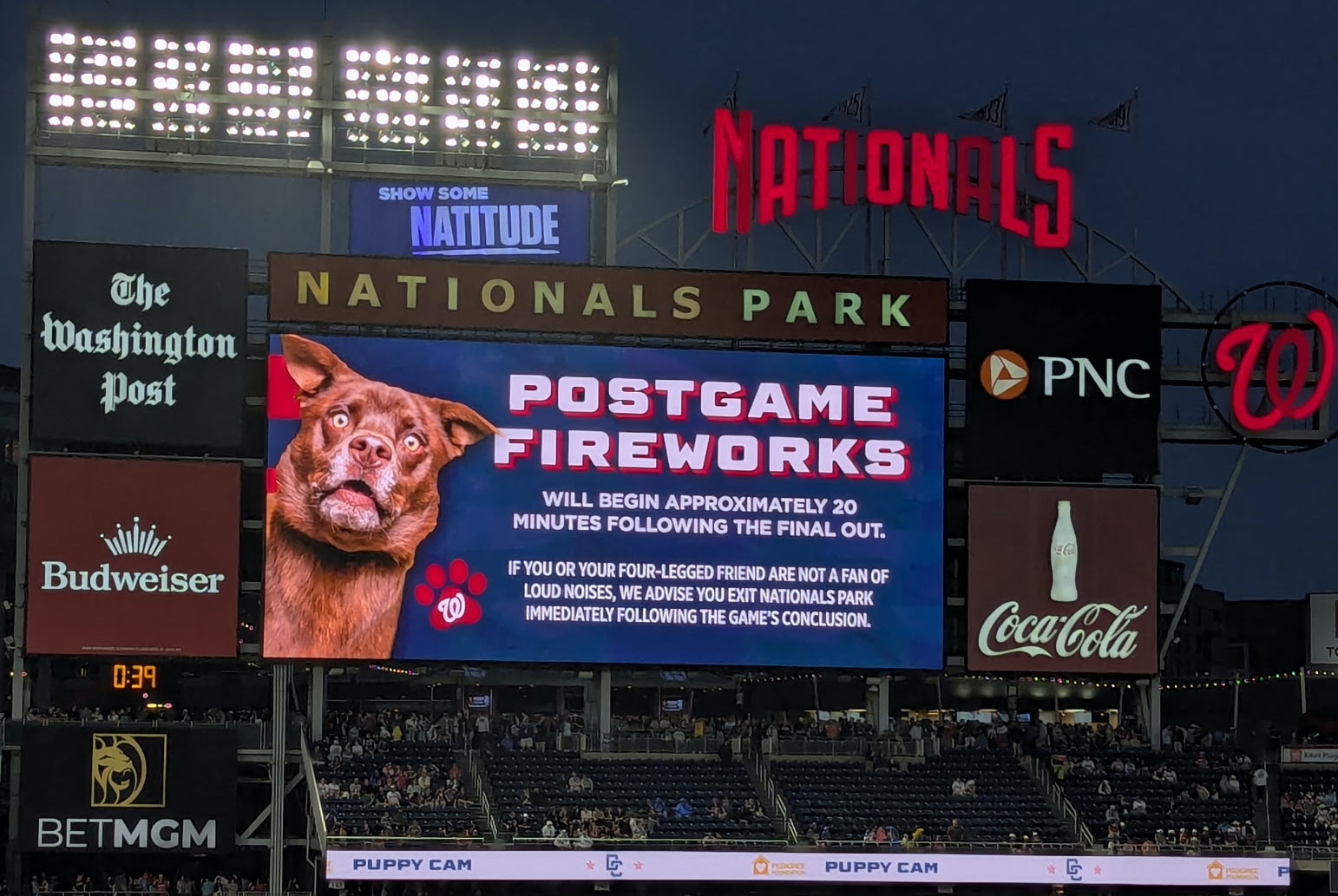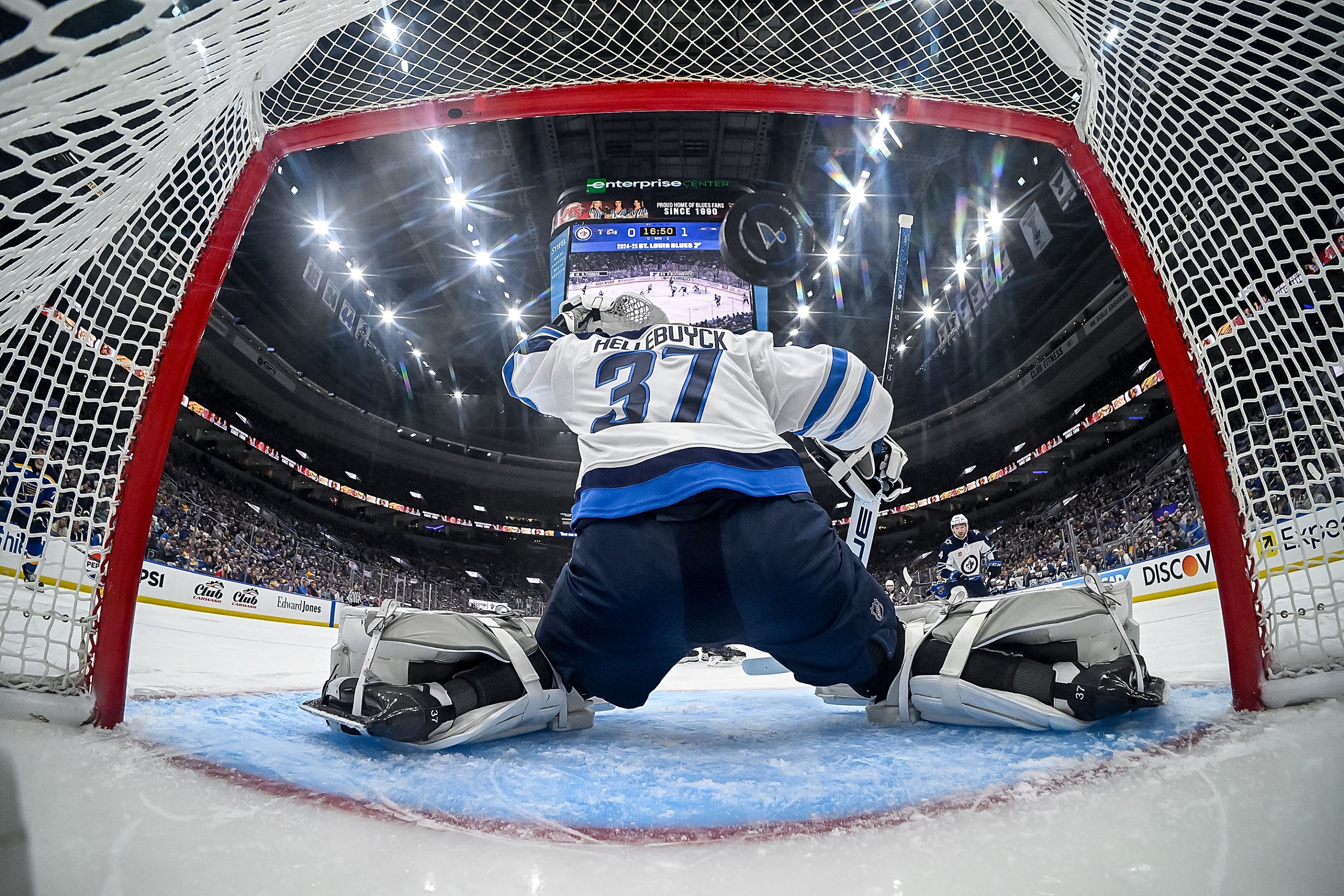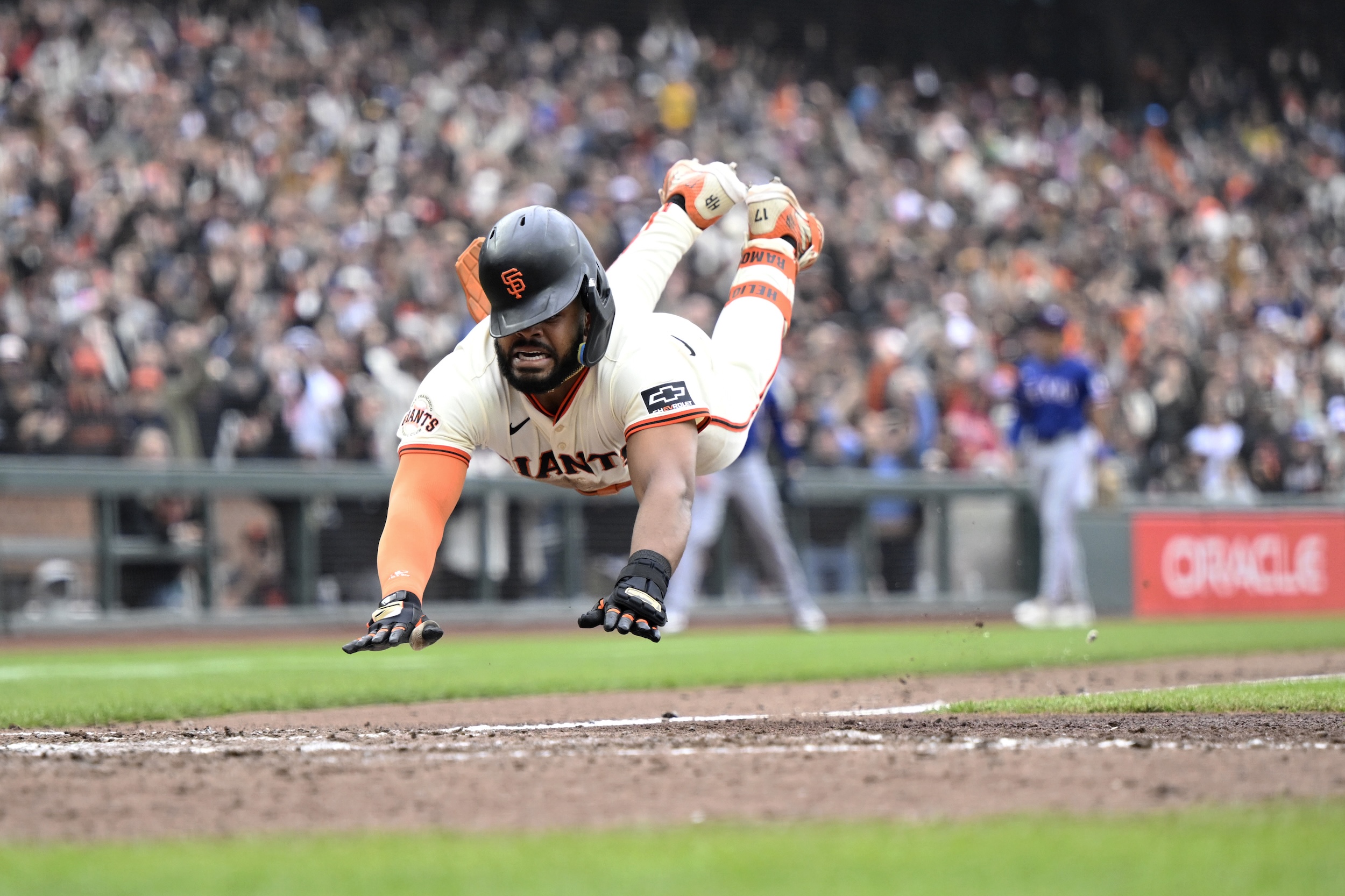Whoa. Whoa whoa whoa.
Hello, Kayvon! That’s him having his way with Matt Gano.
— Jordan Raanan (@JordanRaanan) August 1, 2022
More of these type clips on IG. pic.twitter.com/AdXl93i7ss
Before you ask: No, it is not particularly cold right now in New Jersey, where the New York Giants are holding their training camp. Those big blue shells around certain helmets are not nice warm coats for the poor shivering headgear. Those are "Guardian Caps," which the NFL now requires all linemen, tight ends, and linebackers to wear at all practices until their teams' second preseason games.
Guardian Caps!
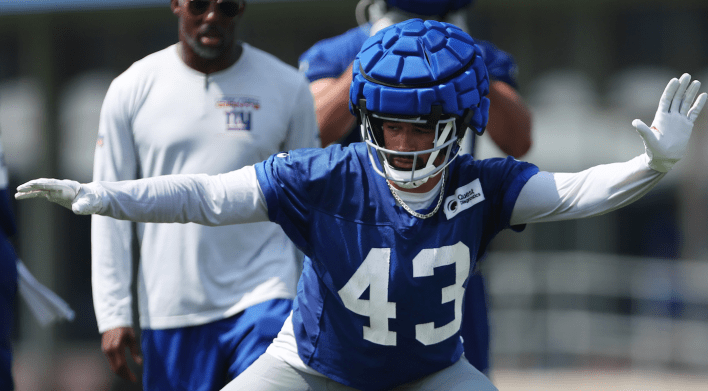
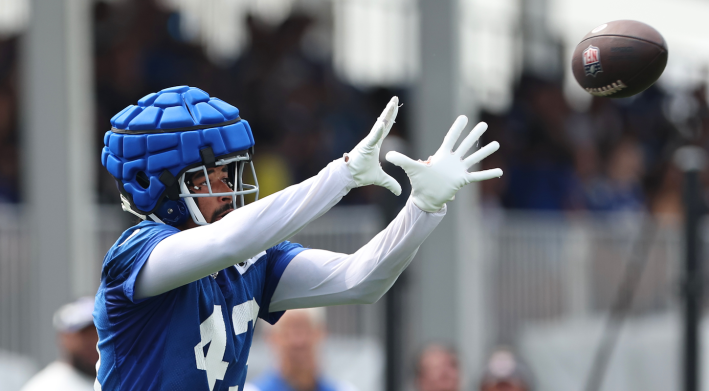
Now that you know that the Guardian Caps are not cozy sweaters, probably you have deduced that they are anti-head-injury helmet tech. The NFL's website, citing no sources of the peer-reviewed or any other type but using extremely legit-looking boldface text, claims...
When worn, the Guardian Cap results in at least a 10% reduction in severity of impact if one player is wearing it, and at least a 20% reduction in impact if two players are wearing them.
NFL.com
I do not want to dismiss any potential good that could be done by a 10- or 20-percent reduction in the severity of impact between two heads crashing into each other at football-player speeds. Impact between heads is not ideal; heads should not impact each other; when they impact each other, it's probably better if they do it at lower, uh, severities. It is perfectly plausible to me to imagine a pair of crash-test dummies being rammed into each other at highway speeds both with and without Guardian Caps while lab-coated scienceticians observe and scribble on clipboards, measuring in some way or other a scale of severity. To whatever extent these big Ferrero Rocher–looking helmet helmets do what the boldfaced text says they do, well, it is very easy to envision this as an unalloyed good (or at least an, uh, unalloyed not-bad).
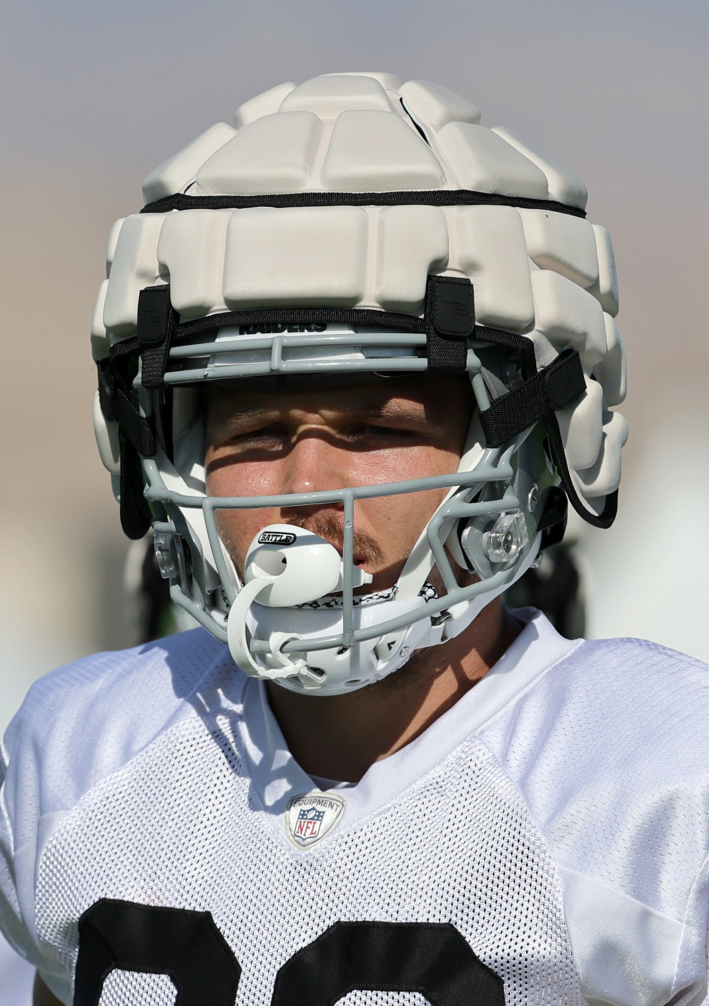
Except, is it? Here it's important to remember that repetitive sub-concussive impact is at least as great an overall danger to the brains of football players as the rarer Jacked Up–type hits that get more of the public's attention: That which makes a given impact less severe might not lead to improved overall safety, if it also increases the number of impacts. Here's what New York Jets coach Robert Saleh had to say about that (emphasis added):
"I do think because of the soft blow, it's kind of lending the players to use their heads a little bit more. I do think the first time when they take it off -- anybody who has played football knows the first time you take your helmet off or you hit with the helmet or you have a collision, there's a shock. I do think that if you're waiting until the first game for that shock to happen ... I don't know, time will tell. It's just interesting with those Guardian Caps and what exactly are we trying to accomplish."
ESPN.com
This is the uneasy balance football's padding and safety equipment has had—and mostly failed—to strike since the sport's early days: What reduces the pain and shock of collision in a sport rooted in intentional collisions might necessarily lead to more reckless behaviors by the players, who have every incentive to seek every available physical edge on every play, and next to no incentives to prioritize their own long-term wellbeing. If the Guardian Cap's greatest utility turns out to be as a means of offloading blame for the dangers of football onto the players—Hey, don't look at us, we gave them safer helmets and they decided to play more dangerously—it will have that in common with no small number of earlier technological advancements.
That is to say, the first thing to know about safe helmet technology in football is that it is never less than directly scam-adjacent at best. It suits industrial football for the relationship between full-pad full-contact tackle football and brain damage—a complex and probably intractable problem effectively indivisible from the sport itself—to persist in the public imagination as one that can be more than marginally ameliorated with superficial changes to what happens on the outside of its players' skulls when they crash into each other. Individual players and their individual brains come and go; the sport turning its participants into encephalopathic husks is only a danger to the industry to the extent that people at large—fans, players, players' families and/or lawyers—know about it, perceive the sport as insufficiently safe because of it, and hold the industry's leaders responsible for it. The next funny-looking, cannily branded iteration of supposedly safe helmet tech can resolve 100 percent of the industry's problem merely by creating the appearance that We Are Taking This Problem Seriously And Investing In Forward-Looking Solutions To It, even if it does nothing whatsoever to prevent football from turning any given player's grey matter into a Slurpee.
To wit, here is a sentence from the NFL official website's blog about the Guardian Caps:
It's the latest example of the league's continued work to foster innovation that leads to better, safer protective equipment for players.
NFL.com
That's it. That's the stuff.
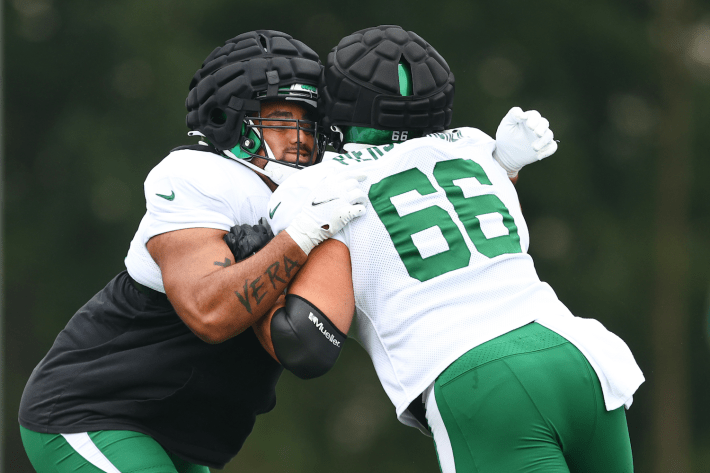
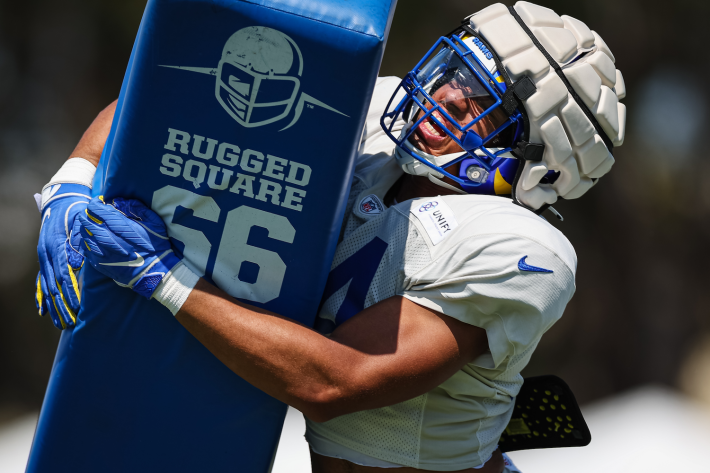
The Guardian Cap's primary feature, in that sense, is that it looks ridiculous, like nothing anyone would ever wear unless it were good for them. If it happens to do anything for the players' problem—that playing contact football is damaging to their brains—nobody will complain. But if it doesn't, and events and/or science (as I suspect) get around to proving this, industrial football happily will let training-camp photos of the next, even more absurdly oversized headgear suffice to pacify a public happy for any excuse to change nothing about its consumption habits.
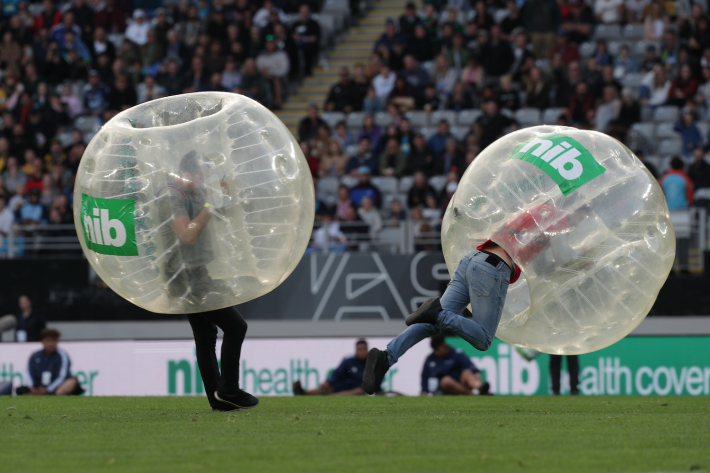
I gotta be honest, as a fan of absurdism and also kind of a dumb guy without much patience for subtlety in metaphors, I sorta like the idea of football helmets continually getting larger and more elaborately dumb-looking, as a visual representation of the impossibility of technologizing the sport's full-contact form into compatibility with brain health. Give me a huddle with a 20-yard diameter to make room for the headgear. Give me a quarterback tilted too far, overbalanced, inverted, sacked by his own giant helmet, legs pinwheeling helplessly in the air. Give me edge rushers looming over the sky like the Death Star, hazy in the distance, striped by a smear of cirrus clouds, a brief terrifying darkness as the outside linebacker eclipses the sun.

